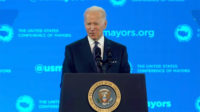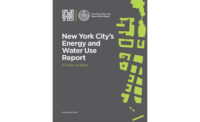In October 2006, a handful of education leaders launched the American College and University Presidents Climate Commitment (ACUPCC), an initiative that aims to make all campuses climate neutral. Of the 4,300 colleges and universities in the United States, more than 550 have signed on, from community colleges to Ivy League schools. Pledges come from all 50 states and Washington, D.C. “The diversity of the schools is incredible,” says co-organizer Lee Bodner, executive director of ecoAmerica, one of three organizations helping promote the initiative.
The ACUPCC encourages general measures to eliminate greenhouse gas emissions, such as pursuing LEED certification for new construction, off-setting greenhouse gas emissions from air travel, and implementing purchasing policies that mandate energy-efficient appliances. It also urges schools to integrate sustainability into the curriculum. Recent signatory Tulane University for example, made Elizabeth Kolbert’s Field Notes from a Catastrophe: Man, Nature, and Climate Change required reading for all freshmen.
Despite its popularity, the initiative isn’t without criticism. Each institution is responsible for establishing its own strategies and deadlines, and there are no enforcement mechanisms. This ambiguity is one reason why some schools refuse to sign on.
Citing that climate neutrality can’t be obtained with the current technology, Yale University has abstained. But that hardly means it’s shunning the sustainability movement. The school’s president, Richard Levin, says he intends to make Yale the “greenest university,” and has started to walk the talk: the school is installing solar panels and wind turbines on campus and is pursuing a LEED Platinum rating for its new Kroon Hall. At Johns Hopkins, also a non-signatory, green efforts include converting shuttle buses to run on biodiesel, says Davis Brookhart, the school’s sustainability director. One problem with the ACUPCC, he says, is that it’s difficult to define a university’s carbon footprint. “If a student goes on spring break to Dayton Beach,” he asks, “are we responsible for that, too?”
Bodner emphasizes that while the ACUPCC does not include formal enforcement measures, universities do post action plans and status reports on the ACUPCC Web site. “If schools are not hitting their targets,” he says, “people in their communities will know.” And despite the skeptics, ACUPCC is on target to reach its goal of 1,000 signatories by December 2009. “It’s really generating the momentum we’re looking for,” Bodner says.





